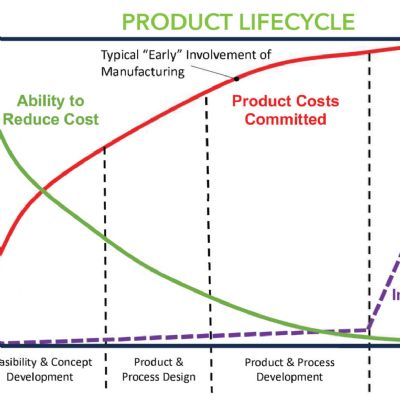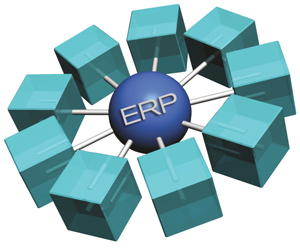3) Build an “A-team.”
In order for an ERP project to function at the highest levels, it must be fueled by the right people. Project teams typically consist of subject-matter experts with the technical prowess and thorough understanding of the company’s unique operations.
While expertise is important, a diverse membership should be engaged to obtain a wide range of input and ideas. Appointing the right people to the team also requires objective knowledge of the company’s culture.
A collaborative environment will support transparency without the fear of repercussions when providing constructive feedback. Members of the project team also should carry influence within their respective networks. As the project moves forward they can become change agents, garnering support throughout the company and becoming role models for advocating change.
4) Understand the tradeoffs.
No one ERP system will meet 100 percent of a company’s desired business needs. Therefore, prioritize your business requirements to optimize the ERP strategy. Otherwise, your team will be trying to develop an optimal system without a blueprint to follow—a blueprint designed for optimum impact within each business unit.
Some packages offer distinct advantages over others. The team should gain a clear delineation on what’s “mandatory” and what options would be “nice to include.” Such a plan will paint a clearer picture of how the software should interact with the overall business. It also reinforces the rationale behind any tradeoffs while not sacrificing essential business needs.
5) Don’t look for a “one size fits all” ERP strategy.
 There is no predetermined template or step-by-step procedure that will work for every organization. Every business comprises unique people and procedures, so it is impossible to make broad generalizations regarding Tier I versus Tier II systems, or choosing between cloud-based and on-premise options. While there are certain guidelines and commonly held practices, ERP projects mirror made-to-order production—only after understanding the specific needs, characteristics and desired vision can a proper strategy be formulated.
There is no predetermined template or step-by-step procedure that will work for every organization. Every business comprises unique people and procedures, so it is impossible to make broad generalizations regarding Tier I versus Tier II systems, or choosing between cloud-based and on-premise options. While there are certain guidelines and commonly held practices, ERP projects mirror made-to-order production—only after understanding the specific needs, characteristics and desired vision can a proper strategy be formulated.
6) Focus on organizational change management (OCM).
Due to the complex nature of change, OCM has become a popular strategy for improving integration and adhering to updated business practices. However, employees may rebuff OCM projects when managers simply declare a change must be made, and then falsely believe that employees will fall in line and enact and preserve the change. While these assertions may work for small, uncomplicated tasks, it is no surprise when full-scale ERP projects that use the same approach bump up against underlying hesitation and resistance. Without end-user acceptance, results usually will be temporary or unsupportive.
OCM offers the leadership team the pulse of the people. It helps identify pain points and trouble signs. Employees gain an outlet to vocalize their concerns while knowing that management values their contributions.
7) Determine the measures of success before implementation starts.
To correctly steer the project, determine the measures for project success early. When the need for an ERP system first becomes apparent, envision how the system should improve the business. If the sole goal becomes implementation, then the project loses sight of what the software was intended to accomplish and it becomes increasingly difficult to gauge return on investment.
Moreover, timely incorporation of success standards protects against delays and missed objectives. Benefits realization also serves to align project expectations and avoid unintentional misunderstandings.
8) You don’t have to implement ERP all at once.
Because an ERP system becomes intertwined with the various levels of a business, it can be precarious to implement. Many ERP systems have modularity within functional areas (CRM, PLM, MRP, etc.) that allow the software to be broken down into segments. Implementing in phases can help with troubleshooting and resolving complications on a smaller scale, before the full system goes live. Attempting to unnecessarily tackle an implementation all at once may cause serious operational disruptions and rework.
9) If you don’t measure it, you won’t achieve it.
As the old adage goes, “out of sight, out of mind.” Manufacturers should supplement any established goals with clear methods to objectively assess performance. Lean towards meaningful metrics that accurately and realistically ensure that the project follows the correct path. Failure to address clear criteria reduces accountability.
10) Recognize red flags indicating you’re headed down the wrong path.
Know what warning signs to look for during implementation, to facilitate timely corrective action and prevent disasters. For starters, watch for high turnover among project-team members.
Another red flag: over-reliance on internal resources. If the team refuses to consider outside project-management support, there could be problems during implementation. Also beware of the “I don’t care, just get it done” mentality. Without a proper response, this will eventually create and compound issues.
Finally, watch for excessive additions to the project scope and unrealistic demands that get tossed in with little to no consideration to the project budget or schedule. It is vital to understand any potential risks and be ready to take corrective actions to steer the project back on track. MF
See also: Panorama Consulting Solutions
Technologies: Management
Comments
Must be logged in to post a comment. Sign in or Create an Account
There are no comments posted. Management
ManagementDOL Announces Nearly $200 Million Allotted for Registered Ap...
Friday, March 1, 2024
Laurie Harbour, President, Harbour Results, Inc., E707
Wednesday, January 24, 2024
 Podcast
Podcast Management
ManagementMetalForming LIVE 2024: Recruit, Retain, Train
Monday, January 22, 2024
 Webinar
Webinar  Management
ManagementDesign for Manufacturing
Peter Ulintz Friday, October 27, 2023








